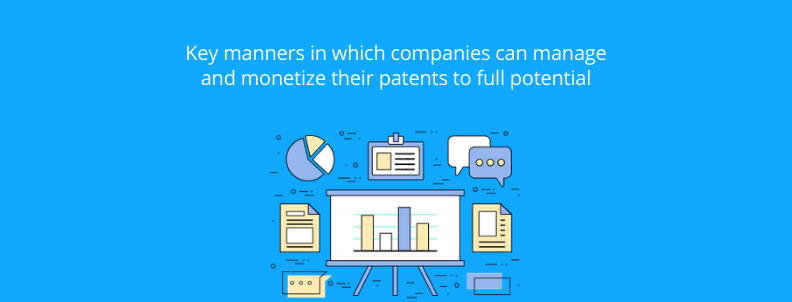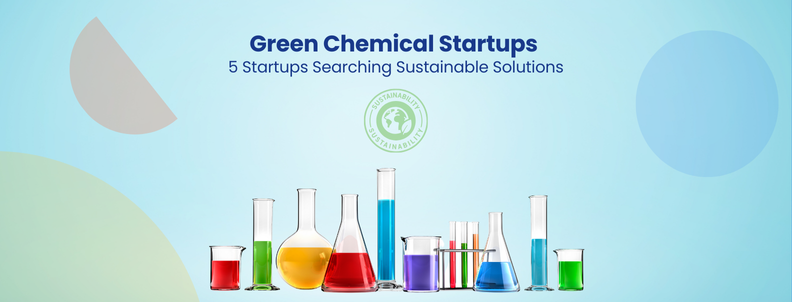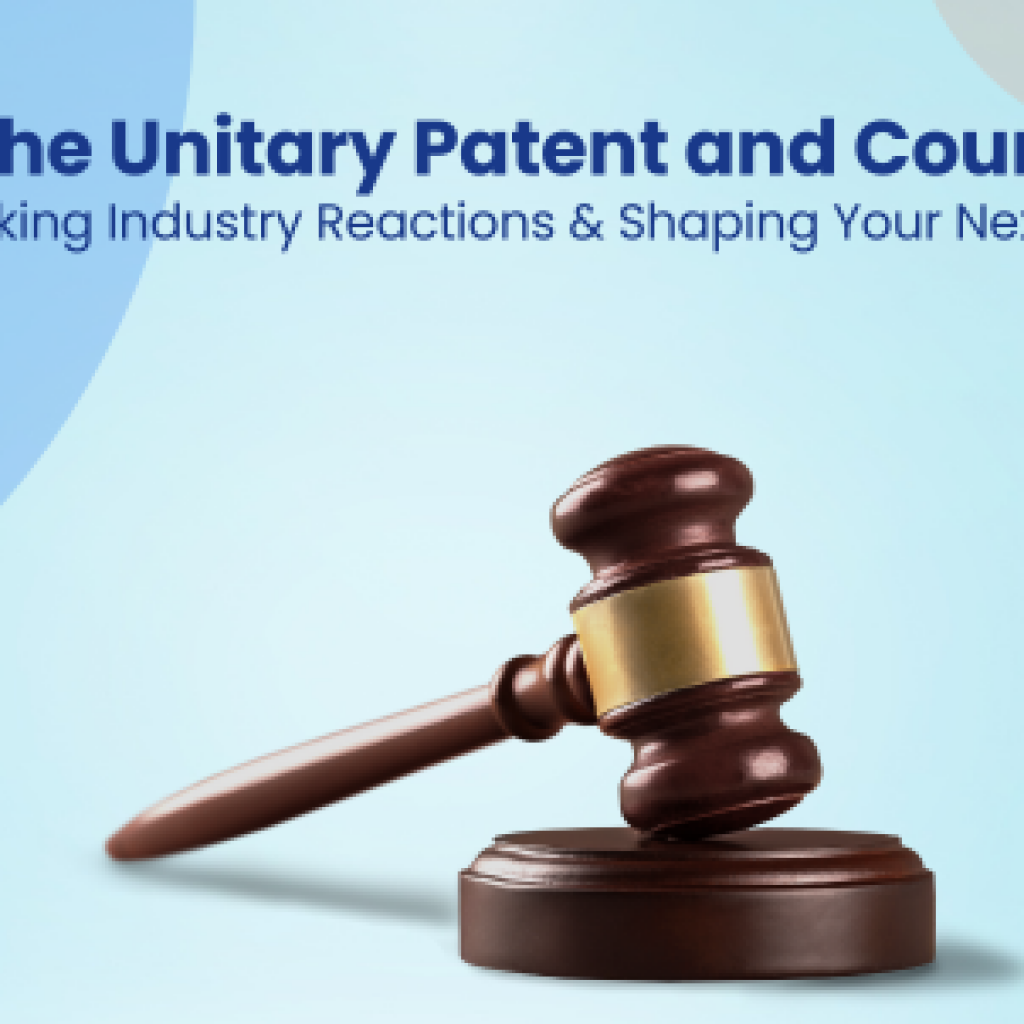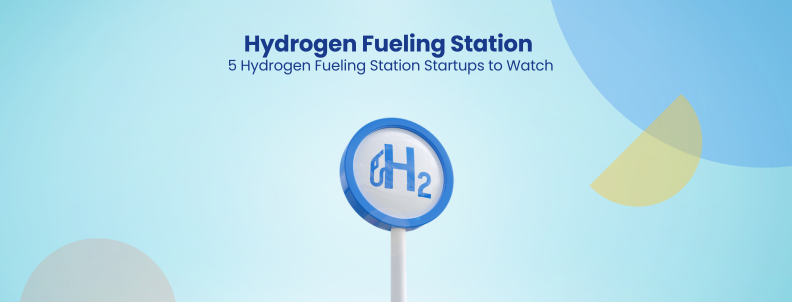Pre-script: This thought piece is written keeping in mind the board members and key decision-makers that aren’t from the IP department. If you are an in-house patent counsel, patent attorney, or patent broker, I know that you breathe these strategies and know them to the core, and these are not new to you. However, your C suite and board of directors may not be aware of them. I encourage you to share it with them. After all, sharing is caring.
**********
Business owners and decision-makers not familiar to the efficacy of efficient IP protection often are known for wondering out aloud – Whether Intellectual property could truly be used in a holistic manner to achieve growth and success for a business?
The answer to that is if the management believes in the power of IP, the company can grow leaps and bounds in no time. In fact, in today’s fast-paced world, conventional strategies for business do not always work. This makes it even more important for the decision-makers to conceive and execute inventive and unique solutions to ensure the growth of the business, and exploring efficient IP protection is one way to do it.
In this article, we wish to explore this innovative approach towards ‘intellectual property’ and how the management can take steps to exploit the full potential of IP, specifically, patents.
Now, when we talk about the successful utilization of a company’s IP, especially patents, various examples from diverse sectors come to mind, including but not limited to Samsung, Motorola, Facebook, Apple, Google, ARM Holdings, Pfizer, Roche, and Sanofi.
One of the notable examples among this list being IBM. In the year 2018, IBM received a record 9,088 patent grants, which marked the company’s 26th consecutive year of U.S. patent leadership. Most of these patents granted to IBM are in the areas of Artificial Intelligence, cloud computing, cybersecurity, and quantum computing.
Now, IBM may not be utilizing all its patents to create new products, but it earns millions through its rich array of patents either by licensing them or by using them as a defense shield against patent trolls or other patent-rich companies.
Marc Ehrlich, Associate General Counsel at IBM, when asked in an interview about IBM’s monetization strategy, quipped that IBM is shifting from patent monetization to “licensing as a part of a broader partnership”.
“We have a larger group in IBM that monetizes our intellectual property and the patent facet of that – in terms of straight patent licensing and sales – is a significant, but relatively small portion of our overall IP monetization efforts. “Patent licensing undergirds our other tech licensing programs. For a long time, we made most of our IP-related income from know-how licensing. But if we didn’t have strong patent protection, we couldn’t have such a strong know-how licensing program. A typical IBM tech license which leads with know-how likely has a complementary patent license behind it. And in some cases, patents are the driver for those licensees coming to us to get that tech.”
The increasing monetary benefits associated with patent licensing have even led to the growth of other forms of businesses, which have based their revenues on the same. Referred to as ‘Non-Practicing Entities’ (NPEs), these companies are in the business of buying and selling of patents and using them to rage lawsuits against any party who infringes their patents. These companies may or may not engage in manufacturing or commercializing the products for which they hold the patents.
The revenues of such companies rake in millions. Notable examples include Acacia Research Group/Acacia Technologies, Tessera Technologies Inc. (renamed as Xperi Corporation), and Intellectual Ventures.
In today’s corporate world, the next significant power lies in the numbers of patents a company holds and how well can it monetize these patents. Patents, these days, are not merely legal instruments but are powerful assets that can bring in commercial value as well as a competitive advantage for its owners.
However, often, there are challenges faced by the companies when it comes to proper utilization of its patents. These challenges include but are not limited to: unearthing the available patent strength of the company itself, proper monetization of available patents, continued due diligence to track the IP assets created by the company and the like.
“Where there is a problem, there is a solution”, said a very wise person once. At least, in this case, there is not just one, but multiple solutions. With that being said, let us take a look at some key manners in which companies can manage and monetize their patents to full potential.

Before we begin doing the same, it is important to note that only patents alone should not be considered to be the only formula of growth and success. Patents must be coupled with suitable strategies to market a good quality product or service.
There must never be any compromise on the quality aspect. It must also be ensured that the product or process being followed is novel and distinctive. With all these factors in place, the proper monetization of patents can do wonders for a business.
Let us now examine a few benefits, which can be availed by a company if it is able to manage its patent portfolio meticulously, and how to achieve them.
Benefits of having a proper patent portfolio strategy
Establishing a proprietary market
Patents based on proprietary technologies aid in creating a valuable asset for the company. It further supports establishing a proprietary market for the company. This can skyrocket the company into a new zone, which can help in establishing a stronghold over the market.
The PageRank patent of Google is a perfect example. This patent was developed by Larry Page and Sergey Brin for a research project at Stanford University in 1996 based on the idea that information available on the world wide web can be ordered in a hierarchy on the basis of ‘link popularity’ and that a page would rank higher with an increase in the number of links.
The patent was filed in the year 1998 and became the basis for the foundation of ‘Google’. Though the patent is granted in the name of Stanford University (U.S. Patent 6,285,999), Google got exclusive rights to the said patent from Stanford University in exchange for 1.8 million shares of Google. With this long-term license deal, Stanford University received $336 million after selling its shares of Google in the year 2005.
Another example of a strong market base is that of ARM Holdings – a company that develops the architecture for computer processors configured for various environments and licenses it to other companies, who design their own products using those architectures.
ARM basically receives an upfront license fee and a royalty on every chip that contains its technology. It is estimated that in the year 2005, about 98% of all mobile phones sold used at least one ARM processor.
By the year 2010, ARM Holdings reported shipments of 6.1 billion ARM-based processors, representing 95% of smartphones, 35% of digital televisions and set-top boxes, and 10% of mobile computers.
In the year 2013, 10 billion ARM-based chips were shipped and in nearly 60% of the world’s mobile devices. In 2016, the reported shipments grew to 120 billion ARM-based chips. In the same year, SoftBank acquired ARM Holdings for $31.4 billion.
Such is the power of creating novelty!
How companies can gain a proprietary advantage?
Let us examine now the ways in which a company gains this proprietary advantage. The company can do so by protecting its core strengths, boost the R&D activities and anticipate new technical advancements.
The company must ensure that its key products or processes are protected correctly under the patents. There have been instances where the patents which were filed for a particular product did not capture the claims properly which in turn made the protection weak – either the claims were too narrow or the claims did not specify the technology clearly or too many limitations.
This would hamper the whole patent. It must be ensured that the patent is drafted by a professional who understands the technology to ensure that all claims are specific and unambiguous.
Even some vague words can become a recipe for disaster. One such example is the use of the words ‘fragile gel’ in US Patent No. 6,887, 832 in the name of Halliburton Energy Services, Inc. This patent was held to be invalid in the matter of Halliburton Energy Services, Inc. v. M-I LLC (doing business as I Drilling Fluids LLC) due to the use of the indefinite term – fragile gel drilling fluid.
Thus, it is important to ensure that key products or processes, which are the core strengths of a company, must be properly protected. For complete protection, the company may have to incur certain expenses like government fees for filings or assistance of professionals for drafting the documents, etc. These charges must not be treated as a burden, but as an investment to a more secure future of the company.
Further, the R&D activities receive a boost with the patents. These days, the acquisitions of patent portfolios help to obtain instantly the yield of years of R&D activities. A good example is the acquisition of Shire by Takeda Pharmaceuticals for $62 billion.
This deal has added rare disease expertise and capacity to the R&D portfolio of Takeda. In fact, the EU Competition Commissioner approved the merger subject to the development of a key product of Shire to treat the inflammatory bowel disease. This condition will further ensure that such important R&D is not lost in the acquisition.
In fact, penetrating into new markets can become much simpler and easier in this manner. The resources utilized in R&D of one company may become beneficial to the other one. An example of such instance is the Business Transfer Agreement ‘BTA’ between the US-based Abbott Laboratories and Indian business house Primal Heath Care.
A ‘BTA’ essentially is a comprehensive sale of assets and liabilities of one entity to another entity. It is like a purchase and transfer of ownership agreement envisaging details of sale of a business, type of transfer, terms of sale, details of assets, liabilities, capital, contracts, customer lists, leases, employee insurance, new employment rights, inventory, tax issues, copyrights, patents, etc.
This acquisition helped Abbot penetrate into new emerging markets in the pharma sector at a consideration of $3.72 billion with the patents of the formulation business of Piramals.
In order to ensure that the patents are fully utilized, it is also important to be ready for advancements in the domain and equipped with strategies to grow. If the business is not ready to anticipate and embrace the changes then it might wither and die.
We have umpteen examples around us where failure in IP utilization led to an unsuccessful business. One such million-dollar product is fidget spinner. The inventor Catherine Hettinger was granted patent (US08068569) for the same in the year 1993.
However, due to a lack of resources, she was not even able to file for its renewal. Today, over 200 million spinners have been produced and the inventor could not earn a single dollar from its manufacture.
An example of losses in business because of not adapting to changing technologies is that of the business giant Nokia, which failed to reinvent itself with the advent and success of touch screen phones, even though it had the IP for new products. Ultimately, the best-selling mobile brand from the year as early as 1998 was acquired by Microsoft for $7.2 billion in the year 2013.
What really happened in the case of Nokia is part of a plethora of case studies, which eventually spill out the fact that Apple and Android crushed Nokia’s mobile phones. However, the surprising information is that Nokia created its first smartphone way back in the year 1996, which had a touch-screen and also was an Internet-enabled phone. The enormous amounts of spending on R&D were never translated into real products.
We must, therefore, be prepared to operate in changing environments and accept it.
Improving financial position
From the financial growth perspective, the key features of patents are that they provide new knowledge to create innovative products or processes and provide legal rights to the patent holder to use his patent without any limitation for the duration of the term of that patent. The novel idea and the right to use the same solely by the patent holder make a considerable economic impact.
The patent holder has the exclusive right to decide if he wants to manufacture this new product or use the innovative process on his own for commercial gains, or he can choose the option of licensing the patent for consideration for a fixed term.
This consideration can be either fixed or variable dependant on the terms of a license agreement. It is pertinent to note that Qualcomm received around $950 million from royalties in the second quarter of the year 2018 from licensing its 130,000 strong mobile technology-related patents to varied device makers.
This amount earned from licensing is way more than a company may earn from its core business. Thus, patent licensing can help a great deal in the growth of a company.
Another option is to sell the patents. IBM has been able to accumulate millions by selling its patents. Twitter acquired 943 patents from IBM in the year 2014 for $36 million during the time of its Initial Public Offering (IPO). Facebook acquired 696 patents from IBM in the year 2012 for a reported amount of $83 million after a patent infringement suit was filed by Yahoo. Alibaba purchased 22 patents from IBM in the year 2013 for an undisclosed amount.
Lately, the bigger companies are even entering into cross-licensing deals. This helps in creating a ‘patent pool’. A patent pool helps companies as it reduces the cost of administrating patents and commercially exploiting the inventions.
It also helps them to fight any infringement together thereby further reducing the expenses. By cross-licensing in the patent pool, rivals can work together to create new technologies and benefit rather than having to compete extensively and waste their resources.
Google and Samsung Electronics have signed a broad agreement to cross-license each other’s patents for smoother operations of the Android operating system for smartphones. Also, it ensures that both grow simultaneously in the market by utilizing the existing patents and patent which are going to be filed in the next 10 years.
It has undoubtedly reduced the probability of litigation for both the companies and helps them innovate in this domain. In fact, taking this point forward, in one of the recent developments between Apple and Samsung, iTunes Movies are now available on the smart TVs of Samsung. In a similar more, iTunes can now also be played on Amazon’s Echo devices.
Further, the patent holder can also choose to sell this patent and earn quick compensation. Thus, the patents are not just legal documents but are the financial assets for any company. The companies must be able to tap their own patent resources fully and aim at additional financial revenues from the existing patent portfolio. It can be achieved through licensing or diversification.
Very often, there are instances when the company learns that the patents pertaining to its previous products or processes may have unexpected applications in other industries and not be outdated for them.
This is also a good opportunity to enhance the value of those patents, which are otherwise lying dormant. The companies may license these patents to such companies in a different sector, which will not even be a competitor of its current products or processes.
An example in this regard is the sale of AT&T’s patents to Uber. These patents date back to the time when Uber was not even incorporated and covers various technologies related to messaging, call handling, routing network traffic, VoIP, billing and ride-sharing. This has definitely strengthened the patent portfolio of Uber and will help them grow further.
Another possible way of earning is the strict enforcement of patents. We have already discussed the possibility of making money by NPEs or patent trolls. These companies are created with the sole purpose of enforcing patents.
They usually file a lawsuit against the possible breaches of patents which result in either whooping amounts paid as damages or settlement of the matter for huge compensation.
It is true that NPEs are perceived as extremely aggressive in their approach and do not hold a good reputation in the market. However, it appears that such NPEs are here to stay and may not disappear any day soon as they are growing at a rapid pace.
Formulating efficient patent management strategies
The financial growth will get enhanced as you will implement strategies to decrease the cost incurred. Employing patent management strategies will keep cost escalation in check.
Few easy steps in portfolio management can reap good benefits, for example:
- Filing the requisite forms and applications within the stipulated timeframe will ensure that no expenses are incurred in seeking extensions before the USPTO
- Filing of timely renewals
- Pruning the patents that are no longer relevant, etc.
Also, coupling patent management strategies with regular audits will help in accessing and answering pressing issues. Not only this, your patent monetization game will go up. Essentially, to maintain a winning patent portfolio, it should be periodically and systematically reviewed and rebalanced.
It must also be ensured that the company’s current needs are met by the patents and the future needs must also be anticipated which include the changes in technologies or product requirements.
This could lead to the company renewing some patents and discarding some. It could also lead to licensing some patents if they are not being manufactured by the company on its own. The company should regularly analyze its competitive position against the available products, processes or technologies which are being used in the industry. It would help in maintaining the growth of the company.
Had Barnes & Noble’s (the online bookstore) anticipated the technical advancements, it would not have been jettisoned by Amazon Kindle. However, they tried to fight the competition by launching and marketing the e-reader – Nook, but have not been able to make much difference with this device. Now, with the acquisition of PillPack (an online pharmaceutical company) by Amazon, many online pharmaceutical service providers are facing the same fate.
Developing a competitive edge
A sound patent portfolio not only helps achieve the leadership in the industry but also helps ensure that the competition is kept at a distance.
Allstate Insurance which is worth $28 billion has more than 100 patents pending. Similarly, United Parcel Service has 313+ patents. The prime objective of these patents is to ensure that the competition does not affect the technologies which are required by these companies.
In order to outrank the competition, there are acquisitions done to ensure that the products of competitors are either stalled or the company’s own R&D is given a boost. Apple Inc., for example, acquired a start-up Vrvana for the reported amount of USD 30 million to focus on its goal to harness the power of augmented reality and counter the rival products like Microsoft HoloLens. Based on their R&D and the Totem device, Apple filed a patent titled as Optical System for Head-Mounted Display.
However, there have been instances where the large companies buy the smaller ones only to kill the competition and terminate their ambitious projects which can otherwise be a threat to them.
Yale University conducted a study in this regard, which revealed that the pharmaceutical companies frequently perform these “killer acquisitions” to ensure that the competing treatments or drugs which are under development are killed in the process.
Post the acquisition, the larger company simply discontinues the competing innovative projects before they are even brought to the market. The team from Yale found that almost 7% of the acquisitions in the pharmaceutical industry were such killer acquisitions and had these acquisitions not occurred, 5% of new drugs would have been introduced in the market.
Another startling fact which was revealed in this study was that the drugs which when acquired by another company had a 92% probability of being discontinued.
An example of this scenario is the case involving pharmaceutical firm Mallinckrodt and Questcor. Questcor enjoyed a monopoly in the category of adrenocorticotropic hormone (ACTH) drugs with its product Acthar, which was used for the treatment of rare, serious conditions, including infantile spasms and nephrotic syndrome.
Later, Synacthen was developed as a direct competitor to Acthar. In an effort to preempt potential future competition, Questcor acquired the US development rights of Synacthen in the year 2013.
Following the logic of killer acquisitions, Questcor did not develop Synacthen and raised the price of Acthar from $40 per vial in 2001 to over $34,000 per vial by 2015. In the year 2017, Mallinckrodt (which acquired Questcor in 2014) had to settle the anti-competitive acquisition case for $100 million.
Though patents have the potential to enhance the innovative quotient of the market, the competitive strategies employed by bigger companies can be fatal for competition.
A patent can also help to exploit new opportunities. It is a no-brainer that instead of spending huge amounts of money in experimenting with a new product or process and wasting years in doing so, it is much easier to acquire an existing company and enter a new market.
Thus, with available patents through licensing or acquisition, diversification is not a difficult exercise since it helps in reducing the risks associated with ideation and launching a new product or service from scratch.
Google and its parent company Alphabet have been championing this cause by acquiring a vast array of companies for the last 2 decades. Android is considered to be the best acquisition made by Google. It was purchased for an estimated $50M in the year 2005. This mobile operating system is currently installed in more than 80% of the world’s smartphones.
Another notable example in this list is the purchase of YouTube by Google for $1.65B in the year 2006. During the time of the acquisition, though YouTube was the biggest video sharing platform, there were concerns that due to the pirated videos hosted on YouTube, it might be an unpleasant experience for Google.
However, almost 10 years later, Google was able to draft and enforce well-written intellectual property policies for the website and generate around $6B in revenue in the year 2015, still retaining the no. 1 position for video sharing and watching.
Another example of a successful acquisition is that of Honeywell and Intelligrated. The material handling solutions provided by Honeywell appeared to be traditional. So, to maintain the competitive edge, they acquired newer technology of Intelligrated.
Intelligrated has a large IP portfolio of warehouse automation, order fulfillment, and software solutions and has an extensive presence in North American e-commerce and the retail, and food and beverage markets. With this acquisition, Honeywell posted double-digit year-over-year growth.
Thus, the risk of failure does not emerge in such scenarios as in most of these cases the product or service may already be launched in the market or ready to be launched. This saves the years of R&D and costs involved in it. It also reduces the duration required for a company to diversify into a new segment.
Conclusion
It is important that the patent strategy of a company is aligned with its business strategy. IP has the potential to be a strategic corporate tool for a company to thrive and diversify. For effective and strong patent management, the business plan must be impregnated with milestones for each step.
At the outset, there is a requirement of identification of correct IP to be drafted and filed in accordance with the products, which are being tested for the commercial viability of the business. If the IP is not aligned with the products or services, then it will not be of any use to the company.
Patents must not be treated only as a legal instrument, but as capital, which can even be traded. There are numerous marketplaces available where the patents can be bought and sold easily. like IAM Market, Licentix, and more. You can find the complete list of marketplaces here.
IP should be infused in a company as a culture to build and protect. It should not be treated as a legal obligation, but a sustainable ongoing advantage. It is true that IP increases the profitability and long term security of both the business and the employees. Keeping this in mind, it is advisable to create such IP policies, which encourage the employees to take part in the development and protection of new ideas in the form of innovative products that could add value to the business.
This new value addition of IP is the key to a promising future ahead.










